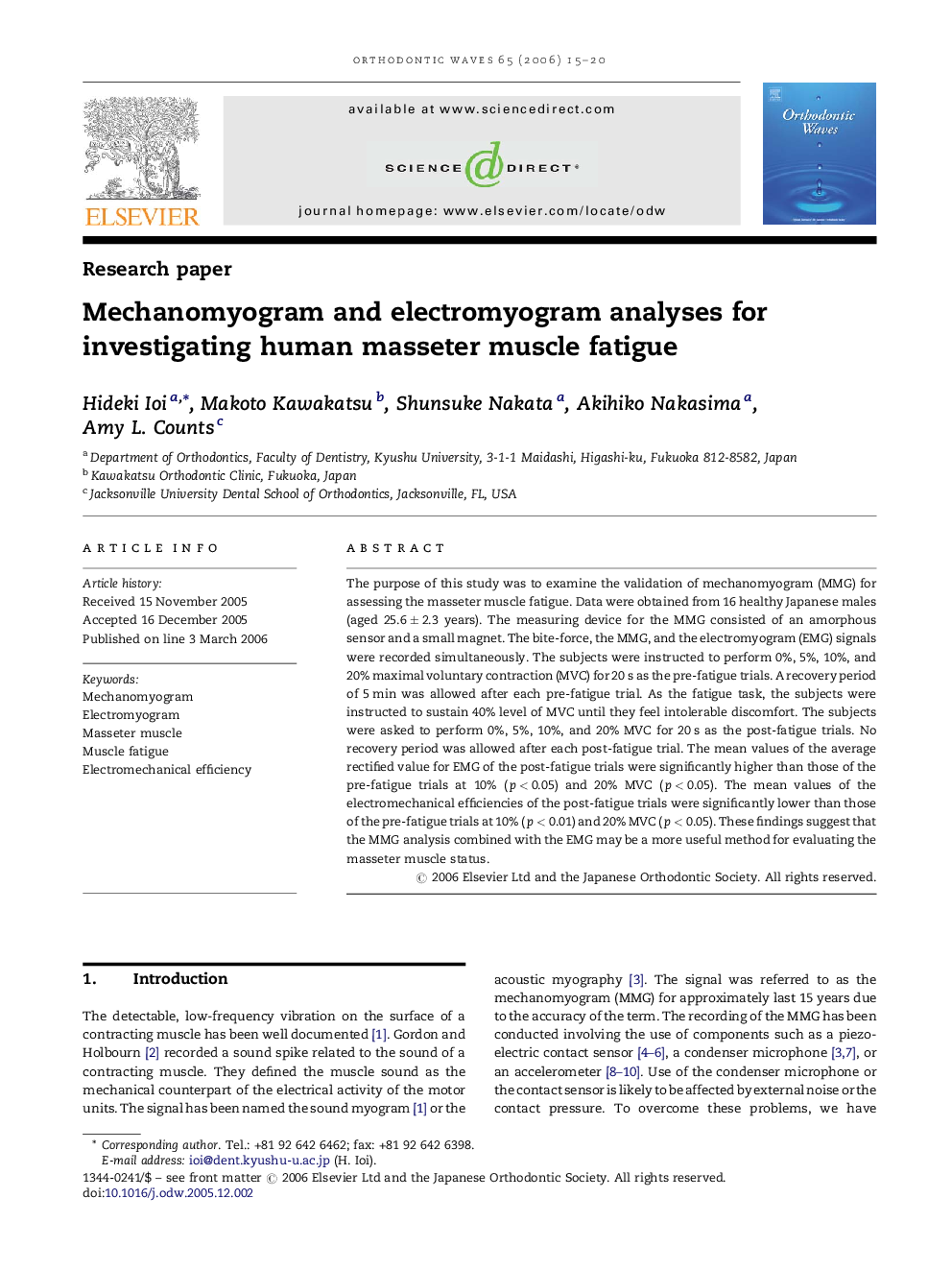| Article ID | Journal | Published Year | Pages | File Type |
|---|---|---|---|---|
| 3170744 | Orthodontic Waves | 2006 | 6 Pages |
The purpose of this study was to examine the validation of mechanomyogram (MMG) for assessing the masseter muscle fatigue. Data were obtained from 16 healthy Japanese males (aged 25.6 ± 2.3 years). The measuring device for the MMG consisted of an amorphous sensor and a small magnet. The bite-force, the MMG, and the electromyogram (EMG) signals were recorded simultaneously. The subjects were instructed to perform 0%, 5%, 10%, and 20% maximal voluntary contraction (MVC) for 20 s as the pre-fatigue trials. A recovery period of 5 min was allowed after each pre-fatigue trial. As the fatigue task, the subjects were instructed to sustain 40% level of MVC until they feel intolerable discomfort. The subjects were asked to perform 0%, 5%, 10%, and 20% MVC for 20 s as the post-fatigue trials. No recovery period was allowed after each post-fatigue trial. The mean values of the average rectified value for EMG of the post-fatigue trials were significantly higher than those of the pre-fatigue trials at 10% (p < 0.05) and 20% MVC (p < 0.05). The mean values of the electromechanical efficiencies of the post-fatigue trials were significantly lower than those of the pre-fatigue trials at 10% (p < 0.01) and 20% MVC (p < 0.05). These findings suggest that the MMG analysis combined with the EMG may be a more useful method for evaluating the masseter muscle status.
